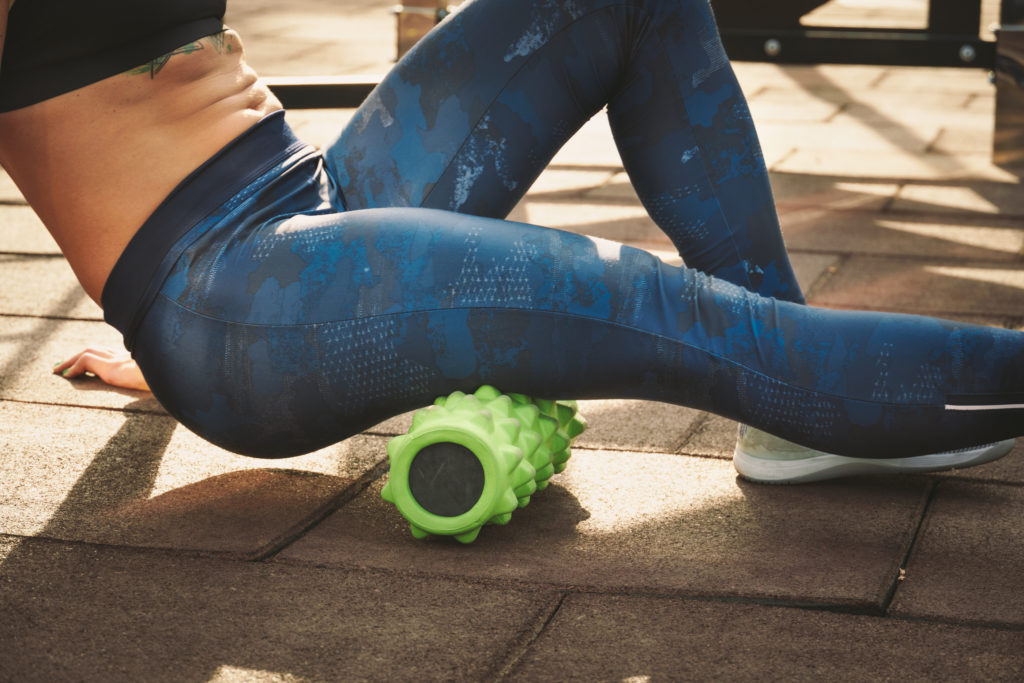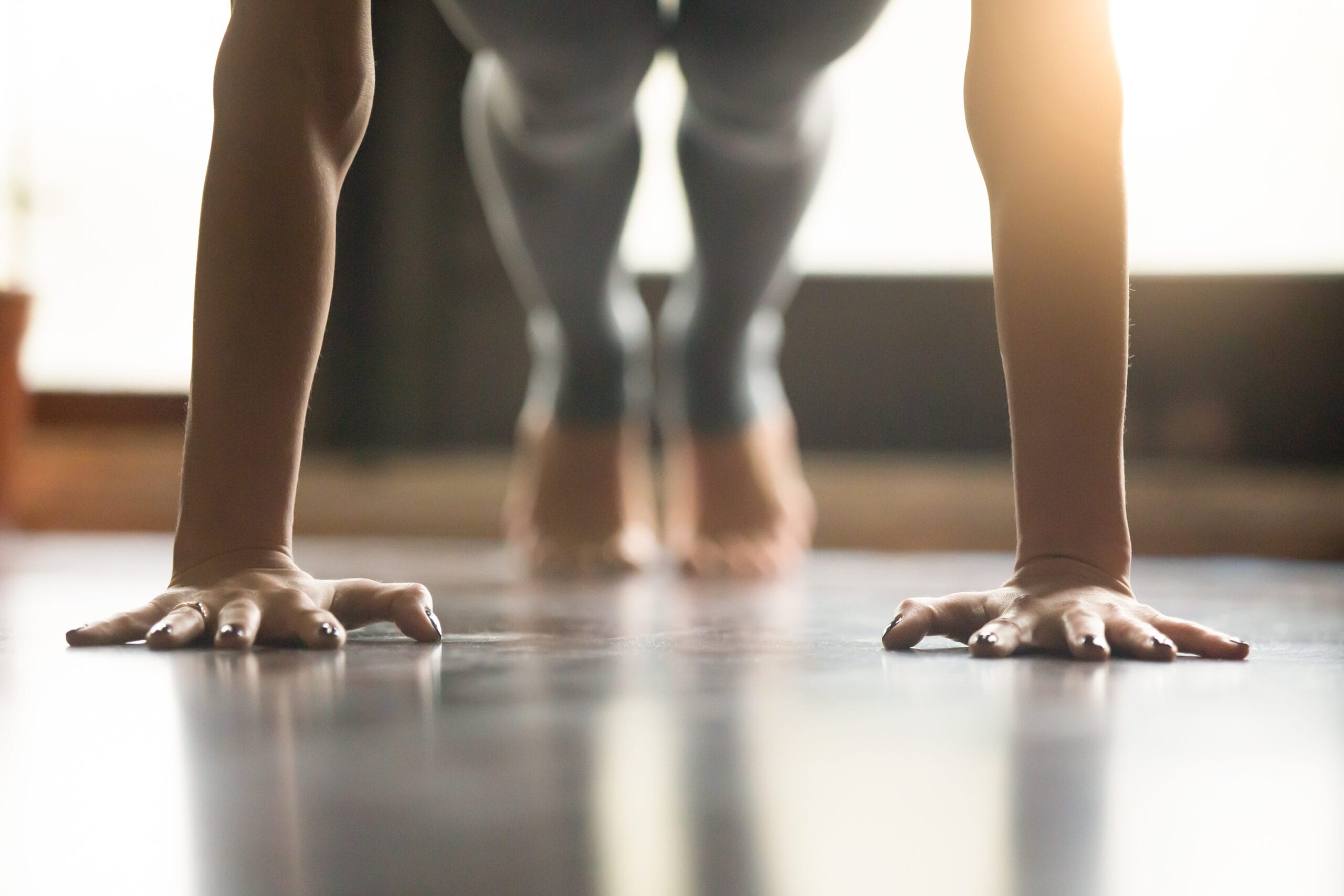
No pain, no gain…right? I’m not sure who coined the famous phrase, but it certainly wasn’t a medical professional. Whether you’re a serious lifter or a weekend warrior, chances are you’ll eventually experience some form of discomfort during exercise.
What you do during these times can make the difference between a mild hiccup or the beginning of a chronic issue.
Unfortunately, there’s a fine line between “pushing through” and making it worse- and sometimes it can be really hard to tell the difference.
I’ve had my fair share of random aches and pains through the years that’ve definitely forced me to alter my workout routines at times.
But if you play it smart and adapt as needed, you can usually continue working out until said injury has recovered.
As a physical therapist (and a fellow home gymer), I wanted to share a few tips to help guide you along your way. I hope you find these suggestions helpful and remember- always consult your family physician when in doubt.
#1 Pain Isn’t Normal
As a geriatric therapist, I work almost exclusively with the elderly. Pain has basically become a vital sign and it’s something I discuss with every patient every day.
Something I hear all the time is that “I have pain, but that’s normal for my age” or “I hurt, but that comes with age”.
The truth is- whether you’re 25 or 75, pain isn’t normal.
Pain is your body’s way of telling you something isn’t right. From arthritic joints, to muscle strains and tendinitises, something irregular is causing you to feel this pain.
Now age definitely plays its part. A mild injury you could ignore and it would go away on its own at 25, will probably cause more trouble and take more work to relieve at 75.
But pain is not a normal aspect of aging.
Ok, my rant is over.
But if you’re feeling pain during your workouts (regardless of your age), you should take it seriously. You should also try to identify specifically what part of your body is hurting and, if possible, identify which exercises increase your discomfort.
Pin-pointing which exercises are causing the pain is essential in finding a way to adapt your workout or at least alter the pain causing move.
#2 If It Hurts, Stop Doing It
Ok, this might sounds pretty obvious, but I promise you it isn’t as easy as it seems. Personally, I can think of several examples of times when I’ve continued to perform certain exercises or routines even though I was feeling pain.
One of the most blatant examples happened 6-7 years ago when I was doing a Schwarzenegger workout. The back workout ended with 4 sets of pull ups to failure.
After a few weeks of this workout, I started experiencing forearm pain (near my elbow) while doing pull ups. They only hurt during this exercise- I could get through the rest of the workout pain free.
Instead of doing the smart thing and cutting pull ups out of my routine, I decided to “tough it out” and keep doing them, even though it became painful.
Well, long story short, I eventually HAD to stop doing pull ups because the pain was too much to ignore.
With stretching, icing, and some self inflicted rehab the pain eventually subsided, but to this day I still have issues with my elbows and I can’t do pull ups the way I used to.
If I had stopped sooner and let my forearms heal properly I may not’ve had to give up pull ups. Who knows. But if something hurts during your workouts, I suggest you stop doing that exercise and see if your pain improves with time.
Another prime example is shoulder pain with incline bench (which I’ve also dealt with in the past). A lot of people start having issues with shoulder impingement during this exercise- and just like any other type of repetitive dysfunction, continuing to perform the irritating movement will make it worse.
So again, if something hurts, take a break from it for awhile and see if it resolves with rest. If rest alone doesn’t take care of it, then you might benefit from seeing a doctor or physical therapist who can initiate a treatment plan.
#3 Know The Difference Between “The Burn” And Pain
This tip should’ve probably been in the “#1” spot, but better late than never I guess. In order for any of this to make sense, you really have to know the difference between feeling “the burn” (which is a good thing) and feeling pain (which is bad) during your workouts.
The burn is the uncomfortable sensation you feel in your muscles as they fatigue during exercise. This has to do with the micro tears that occur in the muscle fibers and the build up of lactic acid… all normal stuff.
This burning sensation is a good thing and it lets you know you’re probably exercising at an intensity that will lead to growth and improvement.
This normal discomfort is gradual in onset and will continue to grow as you continue exercising. It will subside completely after you stop and take a break.
Unwanted (abnormal) pain during exercise is different.
This is the pain that is telling you something isn’t right. This type of pain can be sharp, burning, and sudden. Numbness or electrical sensations are also a bad sign (usually indicating a nerve is being pinched somewhere).
Anytime you feel these types of sensations, you need to stop immediately, because these are signs that something isn’t working correctly.
Continuing to exercise when in pain can easily make your condition worse. With time, it can even turn an acute condition into a chronic condition.
#4 Have A Plan B
“There’s more than one way to skin a cat”. That’s a really gross metaphor when you think about it. But when it comes to exercise, it stands true.
Regardless of what body part or cardio routine you’re working on, I guarantee there are other exercises you can do to achieve the same goal.
One of the great things about exercising is that we have so many options to choose from.
There are thousands of exercises and exercise variations to choose from, giving you the ability to target any muscle group from various angles.
If you do have to give up a certain exercise because of pain, you’ll likely be able to substitute a different move to work the same area.
Currently, I’m having more issues with my right elbow. I don’t want to bore you with my medical history, but basically I’m having pain with some variations of bicep curls.
Learning from my past mistakes, I’m now avoiding the supinated curl because it hurts. My plan B is to work on hammer curls while I get this pesky elbow in check.
Depending on the muscle or body part that’s injured, it can be more challenging to find a pain free alternative, but with a little research and planning I bet you can figure it out.
If you’re having a hard time finding a plan B, leave me a comment and I can help with ideas.
#5 Don’t Forget To Warm Up
Warming up before a good workout is always a good idea, even if you’re currently pain free. But it’s even more important if you’re nursing a sore area or prone to injury.
As a kid, I always thought the stretching and warming up part of PE class was lame. But now I know it gets your body ready for exercise and really reduces your chances of getting hurt.
A good warm up should include a little light cardio and some stretching. I like to get my heart rate up a little with some marching or jogging in place before I stretch.
Sometimes I’ll even jump on my spin bike for a few minutes to get the blood flowing, 3-5 min is plenty.
Once I’m warm, I like to do a combination of static and dynamic stretches, concentrating on the body parts that I’ll be working. Static stretches are the ones you hold in one position for a given time (30 sec or so); dynamic stretches aren’t held.
For example, if I’m working shoulders, I might stretch dynamically with arm circles forward and back and statically with a pec stretch and a posterior shoulder stretch on each side.
Foam rollers, like the one pictured in the image at the top, work great by the way. They can really help loosen up tight muscles before (or after) a workout. Just be careful with them.
Warming up like this increases blood flow and loosens up the joints and muscles before they’re asked to work. Exercising with tight, cold muscles is a great way to pull something.
A good warm up might even eliminate your pain so you can continue exercising without having to alter your routine.


